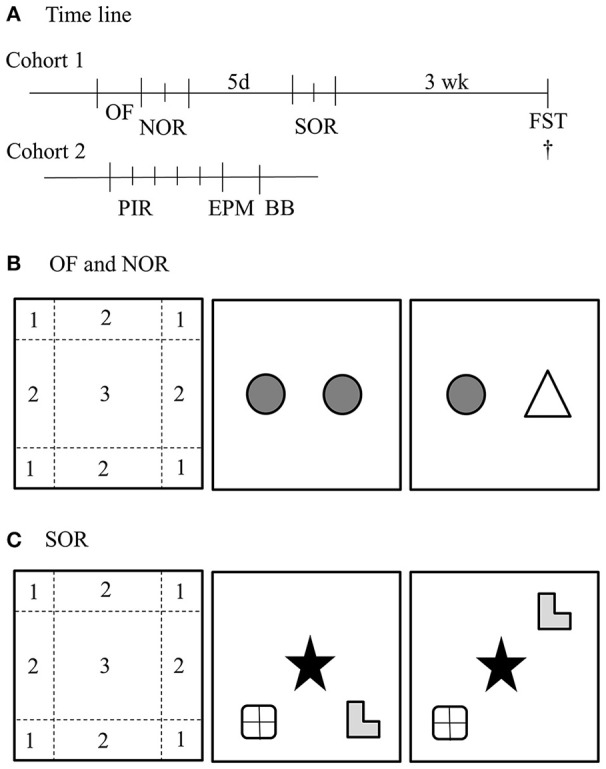Figure 1.

Overview of behavioral paradigms. (A) Time line of the study. The first cohort started with an open field (OF) and novel object recognition test (NOR), 5 days later followed by a spatial object recognition test (SOR) and 3 weeks later a Forced swim test (FST). After the FST, the mice were sacrificed. The second cohort was monitored for 5 days with passive infrared sensors (PIR), subsequently 24 h later tested in the elevated plus maze (EPM) and 24 h later on the balance beam (BB). (B) OF and NOR setup. The habituation phase of the NOR was used as OF. For the analysis with ethovision, the arena was divided in three regions; (1) corner, (2) border, and (3) center. The NOR was started 24 h after the habituation phase, in which the animals could freely explore two identical objects. Again 24 h later, one object was replaced for a new object. (C) The SOR was performed in 2 days. The first day the mice were exposed to four trials of 6 min with a 6 min break in between. The first trial was a habituation phase and the second to fourth trial the mice could explore three different objects in a specific configuration. 24 h later, one object was moved to another position. †Depicts the time of euthanisation.
